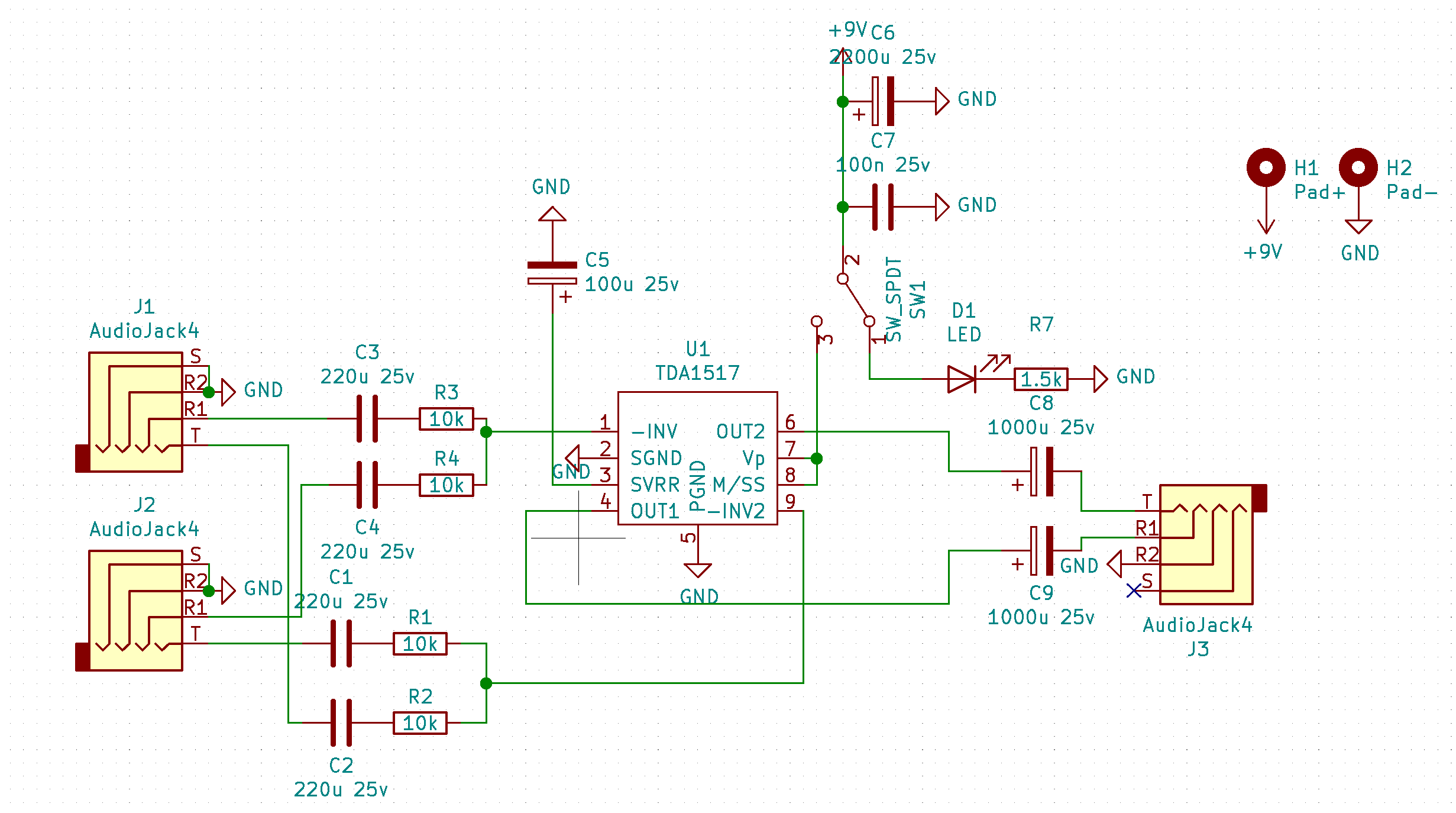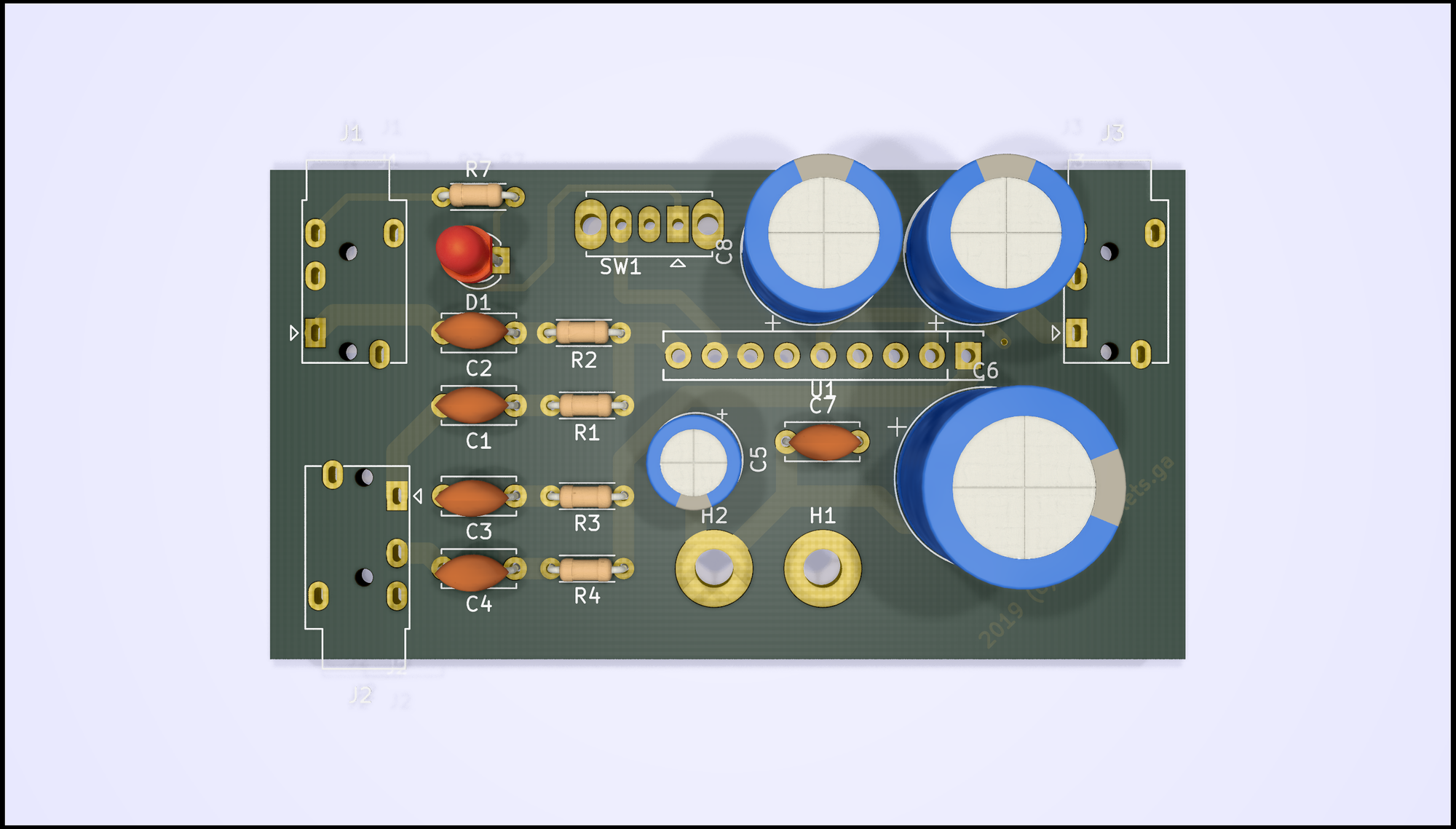Stereo Audio Combiner

For years I've been looking for a solution to real-time audio combining. Trying to combine the music from my phone and the content from my desktop into the same speakers.
Originally I tried it with free software, running a line into my desktop from my phone, and playing it back. This caused some nasty jitter, I was able to resolve it somewhat, but a lot of noise remained.
So a few months ago I decided to create a hardware solution.
Looking up "how to combine audio electronics" yielded a few preliminary results. Like using an audio splitter in reverse, but looking at other results that might also degrade the quality because it wouldn't have the same impedance.
However I found some answers on stackexchange and opamp combiner seemed like the way to go. Now I had some TDA1517 stereo amplifiers around which would be perfect for this, except I didn't know if this could replace a regular opamp.
I created a prototype on some breadboard and it worked! kind of...
The quality was noisy. And the prototype only had a single channel as there wasn't enough space on the breadboard to do both.
I decided that I wouldn't worry about it, and continue to create a proper schematic.
After putting my prototype onto paper, and referring to the TDA1517 datasheet, I found that there was a lot to improve.
Changes:
- Added ripple rejection filter capacitor
- Removed redundant feedback resistor
- Added input capacitors
- One polarized capacitor was wrong way around
The final board design:

All the components arrived, and it was time to put it together. I didn't have any 220nF capacitors at the time so I just put 1uF in, but other than that it was up to spec.
Sadly it didn't work - at all. I did some debugging: inputs were coming through, everything was connected, but no sound.
After putting in a lot of effort to replace the TDA1517, it worked! Seems the one I picked from the pile was already used and broken.
The sound quality was actually great. I tried on with a sine wave generator and could hear the sound mixed with no obvious noise at -60db gain.

And with that the project was complete. I may create a case for it using a 3d printer, but I'll first have to fix the 3d printer.
After thoughts
There are a few things that could be improved with a few more components:
- A dual-channel varistor on each input in case the amplitude is uneven.
- Use a variable gain Stereo Amp for controllable output volume.
- We could integrate a PSU, although it already has a large range of voltages
Sources
If you want to recreate this project or see what sources I used check here.
Everything I have create is licensed under Attribution CC 4.0, so you can do whatever with it.
Project page: https://github.com/i404788/AudioCombiner
References:

